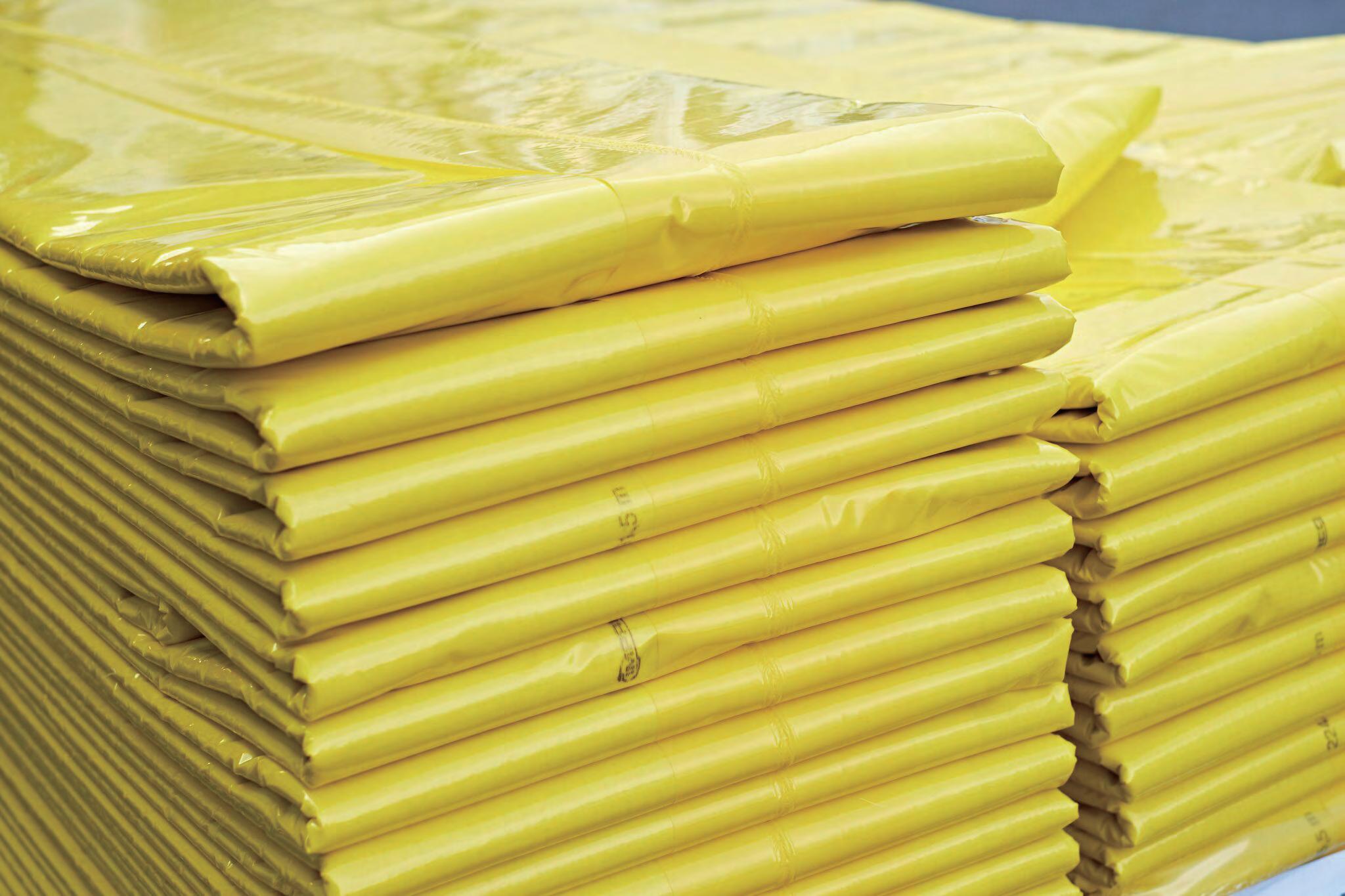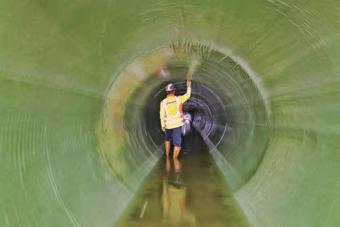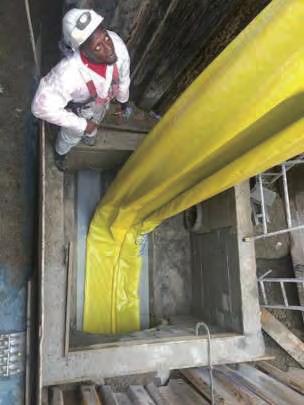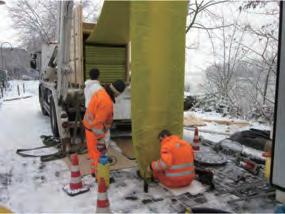
5 minute read
News in brief
Melbourne Water awards contract to upgrade key sewer
Sewer pipe.
The John Holland Group has been awarded a contract to carry out one of the largest upgrades to Melbourne Water’s sewerage network, creating over 20 jobs in the process. The $200 million project will duplicate the Hobsons Bay main sewer, which is responsible for carrying more than 30 per cent of Melbourne’s wastewater to the Western Treatment Plant (WTP). Works on this important upgrade will begin at Scienceworks early next year and the project is due for completion in 2024. Minister for Water Lisa Neville said this vital project highlights the state government’s commitment to delivering essential water infrastructure to support the city’s growing population. “This sewer, originally built in the 1960’s and which runs under the Yarra River from Westgate Park in Port Melbourne to Spotswood, is integral to the Melbourne sewerage network,” Neville says. The Federal Government has released plans for the Torrens to Darlington (T2D) Southern Tunnels, which will see the completion of the motorway between Anzac Highway to Darlington, South Australia. Stage One of the Torrens to Darlington project will include northern entry and exit points and a direct connection to Anzac Highway and includes 6 km of motorway, of which over 4 km is to comprise twin three-lane tunnels. Jointly funded by the Australian and SA Governments, the project is estimated to reach $9.9 billion. When complete, around 60 per cent of the T2D Project will be comprised of underground tunnels. Construction of the Southern Tunnels is expected to start in late 2023, with the entire 10.5km project to be completed – subject to planning, approvals and funding – in 2030.
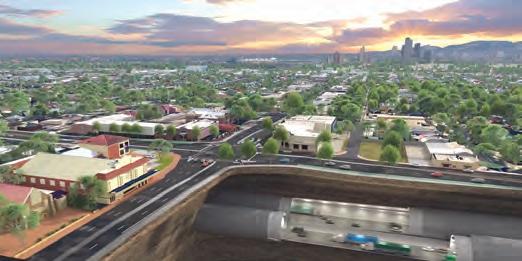
Plans revealed for T2D Southern Tunnels
Artist’s impression of Torrens to Darlington North-South Corridor.
Breakthrough on M4-M5 Link Tunnels
Westconnex M4-M5 Link Tunnels final breakthrough.
The final tunnelling breakthrough on the M4-M5 Link Tunnels has been competed, wrapping up a major construction milestone on the WestConnex project with roadheaders carving rock 43 metres below ground. WestConnex is the largest infrastructure project in Australia, linking Western and South Western Sydney with the city, airport and port in a 33 km continuous motorway, predominantly via an underground motorway scheme. The M4-M5 Link Tunnels are part of a $16.8 billion project to reduce travel times as the state reopens from COVID lockdowns, and the final tunnel breakthrough on the M4 and M5 Tunnel Links marks part of the third and final stage of the project. “This breakthrough isn’t just for a tunnel, but it’s a breakthrough for getting people home sooner and safer and helping workers to move around,” says Prime Minister Scott Morrison said. “As we reopen Sydney and Australia, projects like this bypass and our record $110 billion infrastructure investment are going to give our economy even more of a boost.” The M4-M5 Link Tunnels will open to traffic in 2023.
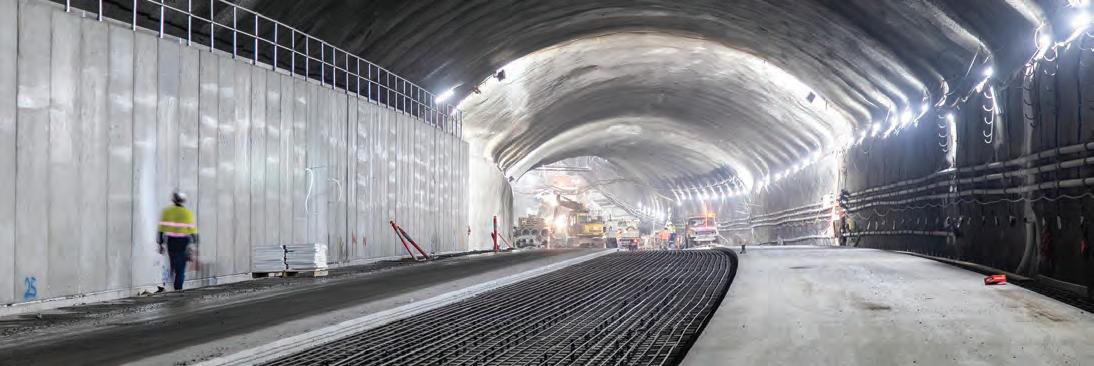
CRL project charges on through Auckland lockdowns
The City Rail Link (CRL) is New Zealand’s largest transport infrastructure project to date, made up of a 3.45 km twin-tunnel underground link up to 42 m below Auckland city centre. Works on the C1 contract at Britomart Station were completed back in October. C1 was one of the earliest contracts for New Zealand’s largest transport infrastructure project to revitalise the city’s rail network. According to operators, it was one of the most complex engineering challenges undertaken in the country. In November, tunnel boring machine (TBM) Dame Whina Cooper started the second leg of its four-stage journey below Auckland streets. The TBM’s 785-metre-long drive from Karangahape Station to Aotea Station in the heart of Auckland’s midtown is planned to finish early in the new year. At Aotea, Dame Whina Cooper will be dismantled underground and returned to Mt Eden in sections, reassembled and then excavate the second rail tunnel in 2022. Two roadheader machines, ‘Dame Valerie Adams’ and ‘Jean Batten’ have ended their work excavating Karangahape’s two platform caverns. The job was completed with the last breakthrough from the caverns into the ‘box’ where the Mercury Lane entrance to the station is being built.
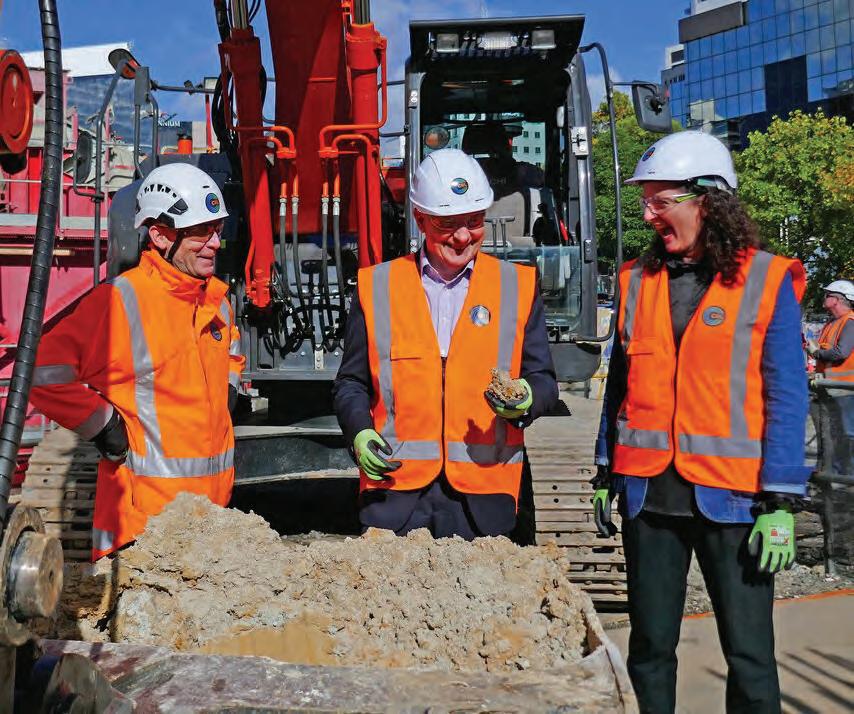
Aotea Station construction moves underground. CRL Chief Executive Dr Sean Sweeney with Auckland Mayor Phil Goff and councillor Pippa Coom.
2021 CCF National Earth Awards
The CCF has announced the winners of the 2021 Earth Awards.
Australia’s peak voice of the civil construction industry - the Civil Contractors Federation (CCF) - has announced the winners of the 2021 Earth Awards, recognising excellence in civil construction. The awards were hosted on Friday 12 November with attendants joining virtually from all over the country. These awards are the most prestigious in civil infrastructure, and among this year’s projects recognised for excellence and innovation were many examples of trenchless methods and intelligent no-dig technologies. Taking home the award for projects under $2 million, Interflow employed trenchless renewal methods to rehabilitate a deteriorated water main in the Mountain Highway in Mount Dandenong. Trenchless renewal was elected over traditional dig and replace methods because of the unstable soil conditions across the steep slope, as well as the heavy local traffic. For projects valued between $2 million and $5 million, Diona was recognised for its replacement works over 1 km of ancient mains for the Brisbane CBD Water Mains Renewal. The design and engagement saved the client $1.3 million and was completed over 106 nights. Abergeldie and Downer & Stantec joint venture received first for its Hawthorn Main Sewer Rehabilitation in the category for projects valued between $10 million and $30 million. The joint venture rehabilitated 1.8 Kim of 118-year-old brick sewer using cured-in-place pipe (CIPP) technology to renew manholes with depths up to 18 m.

